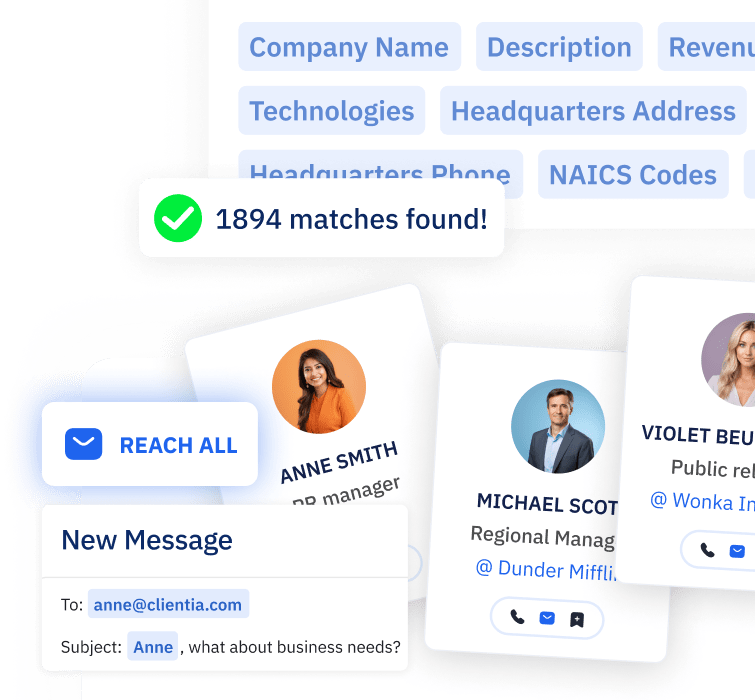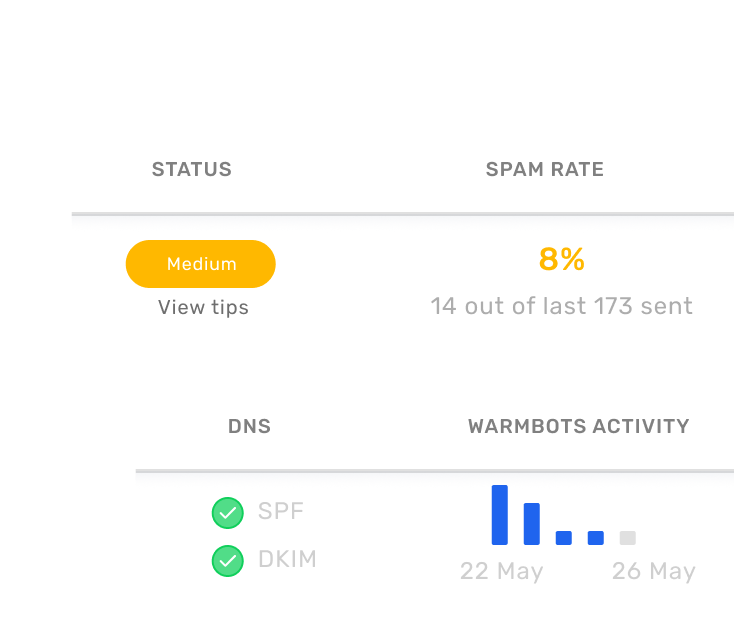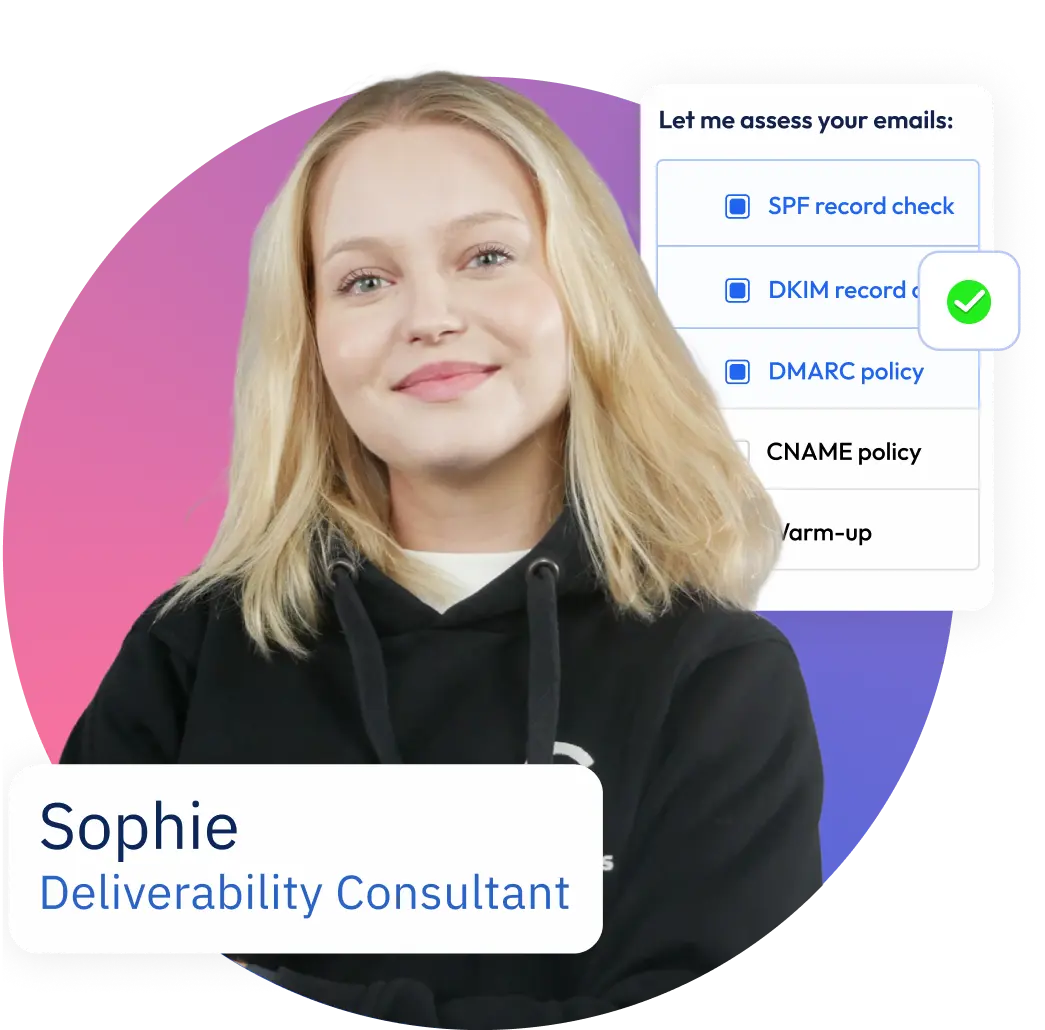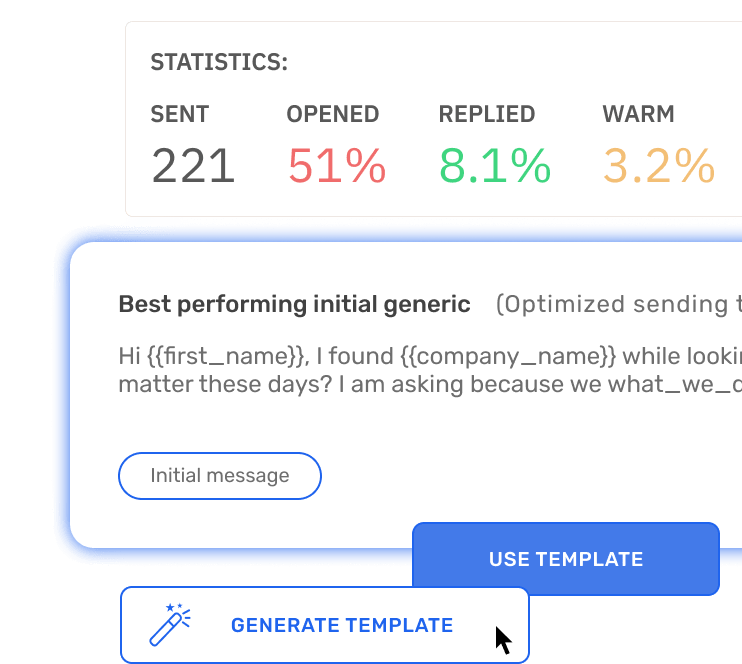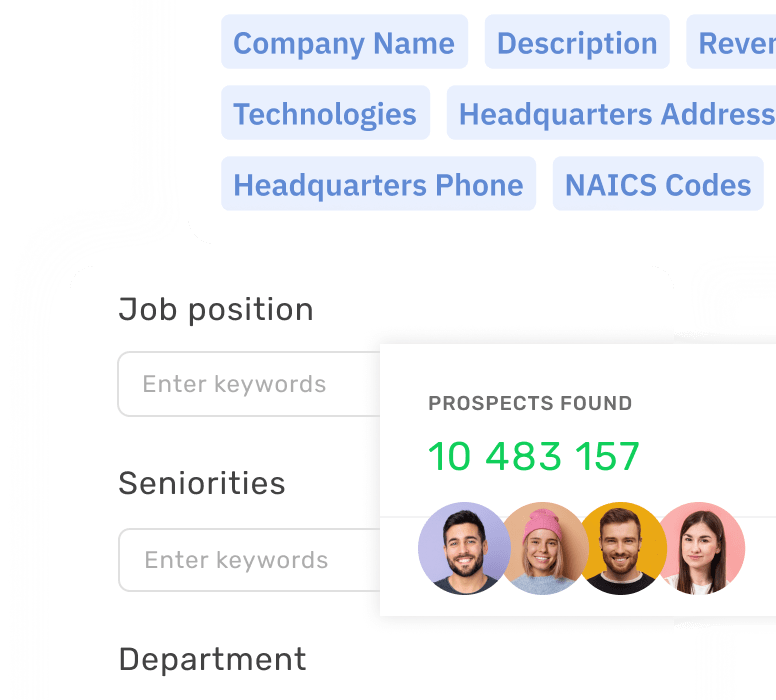Cold email marketing stands as a cornerstone in the modern sales and marketing toolkit. It is the digital equivalent of striking up a conversation with a stranger, hoping to spark interest in a product or a service. As the first touchpoint in the sales process, cold emails can open doors to new opportunities when executed with tact and precision. This approach is particularly valuable in the realm of B2B communications, where establishing connections can lead to fruitful long-term partnerships.
Understanding the intricacies of cold email marketing is essential for harnessing its full potential. The subtleties involved in crafting a message that resonates with the recipients while adhering to legal and ethical standards cannot be overstated. As we dive into the nuances of cold email marketing, it’s critical to recognize its role not just in generating leads, but in positioning your brand as a trustworthy and authoritative voice within your industry.
Key takeaways
- Cold email marketing is a valuable tool in sales and marketing, particularly for B2B communications, used to establish connections and build long-term partnerships.
- It requires crafting messages that resonate with recipients while adhering to legal and ethical standards to be effective.
- Understanding the audience is critical, and research on demographics, business challenges, and career goals is vital for tailoring messages.
- The subject line of a cold email is crucial, as it affects open rates; it should be engaging without being misleading.
- The email body should be well-designed, clear, and readable, with content that is concise yet substantial, and every sentence should add value.
- Personalization in cold emails demonstrates dedication and increases the chance of engaging the audience by addressing their specific needs.
- Adding value in each cold email is essential, whether through helpful insights, offers, or content that the recipient finds immediately useful.
- A clear and compelling call to action (CTA) guides recipients toward the desired next step and is vital for conversion rates.
- Social proof, such as testimonials or case studies, can enhance the credibility of the message and encourage engagement.
- Copywriting for cold emails should balance persuasion with clarity and conciseness, and it should maintain an approachable yet authoritative tone.
- Successful cold email campaigns require a well-defined strategy, careful timing, varied content, and the use of analytics for optimization.
- Email deliverability affects the success of campaigns; maintain a clean email list and follow technical best practices to enhance it.
- Compliance with regulations like CAN-SPAM and GDPR is mandatory and improves trust with recipients.
- Analyzing performance metrics like open rates and conversion rates helps optimize future campaigns.
- Automation tools like Growbots can streamline the cold emailing process, allowing for personalization and efficiency at scale.
- Follow-up strategies should be polite, persistent, and add new value to keep the message relevant and avoid being overbearing.
- Cold emailing serves various purposes, including sales, networking, hiring, and partnerships, with adjustments made to content and tone as needed.
- Crafting industry-specific emails increases relevance by addressing industry trends and pain points.
- Professionalism and etiquette are essential for successful cold emailing and maintaining brand reputation.
- Overcoming common challenges like low open rates involves continued optimization and attention to factors like spam triggers.
- Templates and examples can inspire cold email writing, but customization and personalization are necessary for success.
- The future of cold email marketing will likely see increased use of AI, better analytics, and a focus on ethics and privacy.
- Personalization and demonstrating a clear value proposition are key for engaging cold email recipients.
- Follow-ups should be done thoughtfully, typically a week after the initial email, and spaced appropriately to foster engagement without annoyance.
- Cold emailing is flexible and can be adapted for various objectives beyond just sales, such as networking or recruiting.
Seek, pick, and reach
Connect with your potential customers
- 180m+ contacts
- Advanced filtering
- Multichannel sequences
- CRM integrations
Understanding the Cold Email Audience
Identifying and understanding your cold email audience can mean the difference between an email that is read and one that is ignored. A well-defined target audience can greatly enhance the effectiveness of your email marketing efforts. To this end, it’s imperative to conduct thorough research on the recipient’s industry, company, and role within the organization to tailor your messaging appropriately. Tailoring your cold email campaign to the audience’s needs, interests, and pain points increases the likelihood of engagement, making it a pivotal first step in the cold emailing process.
Prospects still greatly prefer to communicate with businesses over email, and 60% of them have made a purchase from an outreach campaign.
Source: www.rightinbox.com
Successful cold email marketing hinges not only on who you target, but how well you know them. Employing buyer personas and market segmentation can help personalize your approach, while respecting privacy and avoiding the pitfalls of sending unsolicited spam. The more personalized and relevant your emails are, the greater the chances of breaking through the noise of the recipient’s inbox.
Aspect | Description | Relevance to Cold Email |
Demographics | Job title, industry, company size, etc. | Helps tailor the language and offer. |
Business Challenges | Issues the recipient is likely facing in their role. | Allows for solutions-oriented messaging. |
Career Goals | Professional aspirations of the recipient. | May align your offering with their success trajectory. |
Read Prospecting vs Lead Generation to get further insights on how to identify and target the right audience.
Crafting the Cold Email Subject Line
The subject line is the gatekeeper of your cold email; it’s the first text a recipient sees and often dictates whether your email gets opened or cast aside. An effective subject line must be captivating, clear, and concise. It should pique the recipient’s curiosity without resorting to clickbait tactics that might harm your credibility. Crafting the perfect subject line is an art that blends creativity with strategic thinking, aiming to stand out in a crowded inbox.
Email marketing studies suggest that subject lines that invoke a sense of urgency or exclusivity can dramatically increase open rates. However, it’s crucial to balance these elements with honesty and value — the promise made in your subject line must be fulfilled in the email body. Being straightforward and transparent will not only respect your reader’s time but also foster trust right from the start.
Personalized subject lines result in a 30.5% higher response rate.
Source: rightinbox.com
List of Effective Cold Email Subject Line Formulas
- “Quick Question for [Recipient’s Company/Role]”
- “Ideas for [A Challenge They Might Be Facing]”
- “[Mutual Connection] Recommended I Get in Touch”
- “Saw Your Work on [Project/Article], Let’s Talk”
Read Effective Cold Email Opening Lines for examples of engaging opening lines.
Designing the Email Body
Once the recipient has been enticed by the subject line, the email body must deliver on its promise. The design of your email body should prioritize clarity and readability, ensuring that the core message is easily digestible. Short paragraphs, bullet-point lists, and the judicious use of bold or italicized text to emphasize important points can enhance readability. Moreover, incorporating a visually appealing layout and a mobile-friendly design are critical, as many professionals access their emails on the go.
no prior experience & time required
Find your winning outbound formula with Concierge
- 95% activities on our behalf
- Avoid in-house SDR hire
- Learn & Take over anytime
- Numerous A/B tests
When it comes to content, brevity is your friend. Keeping your cold email succinct doesn’t mean it should lack substance—every sentence should serve a purpose, whether it’s to inform, persuade, or call to action. Engaging anecdotes, impressive statistics, or insightful observations can support your narrative. The skill lies in intertwining your sales pitch with an informative narrative that resonates with the recipient’s needs and interests.
Cold Email Design Best Practices
- Aesthetic Simplicity: Use whitespace effectively for readability.
- Visual Hierarchy: Use headings, bold text, or different font sizes to guide the reader’s eye.
- Relevant Imagery: Sometimes, a well-chosen image can communicate more than words.
Best Practices for Email Body Design
| Clarity | Use simple language that conveys your message clearly. |
| Brevity | Keep your content concise to respect the recipient’s time. |
| Readability | Use bullet points, headings, and short paragraphs. |
| Visual Appeal | Incorporate branded elements and appealing layouts. |
| Mobile-friendliness | Ensure compatibility with mobile devices. |
| Purposeful Content | Include information that is relevant and valuable. |
Read Cold Email Copywriting for more detailed guidance on writing compelling email content.
Personalization Techniques
In the world of cold emailing, personalization stands as a beacon that guides your message to the shores of the recipient’s interest. It demonstrates your dedication to understanding them and addressing their unique needs. But personalization extends beyond addressing someone by their first name—it encompasses acknowledging their position, recognizing their challenges, and offering tailored solutions that resonate with their situation.
Having several personalization fields throughout your email can improve reply rates by 142%.
Source: hexospark.com
Employing personalization at scale might seem daunting, but with the right tools and data, it’s achievable and significantly impactful. Leveraging technology like CRM systems and Growbots can facilitate this process, allowing you to segment your audience based on a variety of factors and automate personalized outreach. This level of personalization captivates your audience, differentiating your email from the mass of generic messages that flood their inbox.
Strategy | Description | Implementation Example |
Name and Company Mention | Basic personalization with recipient information | “Hello [Name], I noticed at [Company] you’ve been…” |
Reference Recent Events | Mention recent company news or recipient’s achievements | “Congrats on [Event/Award], it’s quite an achievement!” |
Customized Solutions | Propose solutions based on the prospect’s specific needs | “Based on [Need], our [Product/Service] might be the right fit.” |
Read AI for Sales Prospecting to get with information on how AI can enhance personalization in sales.
Adding Value to Your Cold Emails
Every cold email should be a trojan horse of value—unassuming at first glance, but packed with utility once opened. Adding value goes beyond the product or service you’re offering; it’s about providing something of worth that can be immediately appreciated by the recipient. This could be in the form of a compelling piece of content, an invite to a relevant event, or even a useful tip or insight relevant to their industry.
Understanding what constitutes value from the perspective of your recipient is instrumental. It may vary depending on their role, their industry, or their current challenges. Identifying these factors and aligning your email content to address them is key. If your cold email can solve a problem, answer a question, or fulfill a need even before a relationship is established, you’re likely to gain the recipient’s attention and trust.
Elements of Value in Cold Emails
- Solutions to Pain Points: Highlight how your product or service resolves specific issues.
- Educational Content: Share valuable insights, guides, or case studies.
- Exclusive Offers: Provide something uniquely accessible due to the outreach, like a trial or discount.
Developing a Compelling Call to Action
The call to action (CTA) in your cold email is the crux of your communication. It’s what guides the recipient towards the next step, whether it’s scheduling a meeting, downloading a resource, or just replying to the email. A compelling CTA is clear, concise, and motivates the recipient to take action. To craft an effective CTA, you need to consider the language, design, and placement within the email. It must stand out and be easy to find—using buttons or hyperlinked text can make it more visible.
A strong CTA directly relates to the value proposition highlighted in the email. It’s a natural progression from the information provided, not an abrupt demand or plea. It should be framed in a way that makes taking the next step appear beneficial for the recipient, not just for you. The right combination of persuasive language and strategic positioning can significantly increase your cold email’s conversion rates.
Quality | Importance | Actionable Tip |
Clarity | Ensures the recipient knows what to do next. | Use imperative verbs like “Schedule,” “Download,” or “Learn.” |
Prominence | Makes the CTA standout. | Employ buttons or hyperlinked text with contrasting colors. |
Relevance | Aligns with the recipient’s interests or needs. | Tailor the CTA based on the content of your email and the recipient’s profile. |
Want to get to know ins and outs of emails CTA? Read Effective Call to Action in Emails.
Utilizing Social Proof
Social proof is an essential element that can bolster the effectiveness of your cold email marketing strategy. Testimonials, case studies, and endorsements from well-respected clients or industry influencers can significantly strengthen the credibility of your pitch. In fact, including social proof can result in higher response rates as it reduces the perceived risk from the prospect’s perspective. Witnessing others who have reaped the benefits of your product or service can be the nudge needed for someone to engage with your message.
The use of social proof in your cold emails doesn’t have to be overt or excessive. A single, powerful quote or a brief mention of a relatable success story can do the trick. It’s about validating your offer by showing its real-world impact, thereby making it more attractive in the eyes of your prospects.
Messages that contained links to social profile links in the sender’s signature had a 9.8% higher average response rate.
Source: outplayhq.com
Evidence of Social Proof in Cold Emails
- Testimonials from similar companies or industries.
- Case studies showcasing successful outcomes.
- Recognizable logos of partner organizations or clients.
Cold Email Copywriting Best Practices
Writing for cold emails poses a unique set of challenges and opportunities. You must be able to grasp the recipient’s attention swiftly and maintain it long enough to convey your message. The copywriting involved requires a blend of persuasion, clarity, and conciseness. Adhering to best practices can lead you to create emails that are not just read, but acted upon.
The very foundation of successful cold email copywriting lies in holding the reader’s interest. This involves using active voice, opting for positive language, and eliminating any jargon that could confuse or alienate the reader. The tone should be informal yet professional, creating a balance that makes your email approachable yet authoritative.
Copywriting Elements
| Subject Line | Captivating and promising value. |
| Opening Line | Engaging and relevant, addressing the recipient directly. |
| Body Copy | Informative and succinct, emphasizing benefits. |
| CTA | Clear and action-oriented, easy to spot. |
| Closing | Warm and professional, inviting further communication. |
Continuing from where we left off at Cold Email Copywriting Best Practices, let’s delve into the remaining key components that define a successful cold email marketing strategy.
List of Cold Email Copywriting Tips
- Use active voice to energize your writing.
- Craft sentences that build on each other to maintain flow.
- Avoid jargon that obfuscates rather than clarifies.
Cold Email Campaign Strategies
Carefully planned cold email campaign strategies form the framework within which individual emails can function effectively. Strategy encompasses everything from the preparation of your contact lists to the crafting of email sequences that take potential clients on a journey from unawareness to active interest. Strategizing involves setting clear objectives, defining your unique value proposition, and outlining measurable goals for each campaign.
Timing and frequency are pivotal; bombarding recipients with too many emails is as detrimental as contacting them too infrequently and missing out on engagement opportunities. Establishing a rhythm that keeps you at the forefront of the recipient’s mind without overwhelming them is the sweet spot for cold email campaigns. Utilizing tools for scheduling and tracking interactions is invaluable in executing these strategies with precision.
Element | Description | Benefit |
Timing | The decision when to send emails for best engagement. | Maximizes open and response rates. |
Content Variation | Using different content types across emails in a campaign. | Keeps the campaign dynamic and tests what resonates best. |
Analytics | Tracking open, click-through, and response rates. | Enables optimization based on performance data. |
The Role of Email Deliverability
Email deliverability plays a vital role in the success of any cold email campaign. It’s the measure of how likely your emails are to land in the recipient’s inbox rather than the spam folder. Factors affecting deliverability include the reputation of your sending domain, the quality of your email content, and the level of engagement your emails typically receive.
Warm-Up for Predictable Outcomes
Reach Inboxes, Not Spam Folders
- NO Cost for 3 Inboxes
- Monitoring
- For all email providers
- Deliverability Testing
your email setup check
Be compliant with the newest Google & Yahoo regulations
- SPF Record CHECk & setup
- DKIM Record Check & Setup
- DMARC Policy Setup
- Creating a new custom domain
Improving email deliverability may involve technical aspects such as setting up proper SPF and DKIM records, as well as being mindful of the content you send and how frequently you send it. It’s crucial to keep your email lists clean and up to date, removing unengaged subscribers to maintain a healthy sender reputation. Experimenting with various subject lines, body copy, and sending times can also provide valuable insights into what works best for your audience.
Strategy | Benefit | Implementation Example |
Domain Authentication | Validates your identity, reducing the chance of being marked as spam. | Set up SPF, DKIM, and DMARC records. |
Clean Email Lists | Minimizes bounce rates and preserves sender reputation. | Regularly remove unengaged subscribers and invalid emails. |
Regulation Adherence | Avoids penalties and ensures compliance. | Follow CAN-SPAM Act requirements, and GDPR for EU residents. |
Learn more on how to improve email deliverability form the article How to Improve Cold Email Deliverability
A little less than one in five of all outreach gets re-routed directly to spam.
Source: rightinbox.com
Cold Email Compliance and Regulations
Compliance with email regulations such as CAN-SPAM in the U.S and GDPR in Europe is not optional; it’s a legal requirement that protects individuals’ privacy rights and ensures ethical marketing practices. These regulations stipulate guidelines on the transparency of the sender’s identity, the inclusion of an opt-out mechanism, and the legitimacy of the email’s content.
Non-compliance can lead to hefty fines and a tarnished reputation, so it’s imperative to understand and follow these regulations. This includes obtaining consent where required, providing clear identification in your emails, and honoring opt-out requests promptly. Treating these regulations as a baseline standard for ethical conduct in your cold email marketing can actually improve trust with your recipients and, ultimately, response rates.
Regulation | Key Requirement | Importance |
CAN-SPAM Act | Provide a clear opt-out mechanism. | Mandatory for avoiding legal repercussions in the US. |
GDPR | Acquire consent before sending emails. | Essential for engaging with EU prospects. |
CASL | Get implied or express consent to send commercial emails. | Required for compliance in Canada. |
More on cold email compliance and regulations you can find here – Sales Outreach Email Spam Laws.
Analyzing Cold Email Performance Metrics
Analyzing cold email performance metrics provides invaluable feedback on the effectiveness of your campaigns. Metrics such as open rates, click-through rates, response rates, and conversion rates offer a quantitative assessment of how well your emails perform. These insights allow you to make data-driven decisions when planning future campaigns.
It’s essential to determine which metrics are most aligned with your campaign goals. For instance, if brand awareness is your primary aim, monitoring open and click-through rates might be more relevant than conversion rates. Using analytics tools like Growbots’ Cold Email Analytics will help you track these metrics effectively, enabling you to refine your strategy continually for better results.
Metric | Indication | Goal |
Open Rate | Subject line effectiveness. | Maximize to ensure the message is being read. |
Response Rate | Engagement level. | Increase for higher interaction and potential conversion. |
Conversion Rate | Campaign’s influence on actions. | Optimize to improve ROI of email efforts. |
Leveraging Cold Email Automation Tools
The utilization of cold email automation tools can significantly streamline the outreach process, making it more efficient and scalable. Automation allows for the scheduling of email sequences, personalization of messages based on set parameters, and the systematic follow-up on leads. It’s a way to ensure consistency in your communications without the manual input that would be impossible to sustain at scale.
Growbots, as an example, offers a platform that automates the process from prospecting to outreach, even optimizing send times for better engagement. By leveraging such tools, your sales team can focus more on crafting quality messages and less on the repetitive tasks that accompany high-volume email campaigns.
Benefits and Tools:
- Time-saving through scheduling and follow-ups.
- Personalization at scale with dynamic template fields.
- Analytics for tracking campaign performance and fine-tuning strategies.
Tool | Function | Advantage |
CRM Software | Manages contact information and interactions. | Centralizes data for personalized outreach. |
Email Outreach Platforms | Executes and monitors email campaigns. | Streamlines the process from prospecting to follow-up. |
Analytics Services | Provides detailed reporting on key metrics. | Offers actionable insights to refine approaches. |
Read Automate Sales Prospecting to learn insights on how automation can aid in sales prospecting and cold emailing.
Follow-Up Strategies in Cold Emailing
Persistence is key in cold emailing, and effective email follow-up strategies can dramatically improve your chances of getting a response. It’s not uncommon for the first email to go unnoticed or to be set aside for later, which means following up can keep your message on the radar. A follow-up email should be more than just a reminder; it should add additional value or provide a new angle on the previous message.
Reach More with Less Effort
Connect with Potential Clients at scale
- AI message generator
- E-mail verification
- Multichannel sequences
- A/B testing
There’s a fine line between being persistent and being pesky; timing and relevance are crucial. A well-timed follow-up can rekindle interest, but too many too soon may irritate your prospect. As a rule of thumb, waiting for a week before sending a follow-up and then spacing any subsequent follow-ups by increasing intervals can be an effective approach.
Strategies for Effective Follow-Ups:
- Be politely persistent, with a series of 2-4 follow-ups spaced over a few weeks.
- Refresh the conversation by offering new information or value.
- Respect the recipient’s time and interest levels.
Table: Follow-Up Email Guidelines
Interval | Email Content | Purpose |
3-4 days post initial email | Additional value or information. | Re-engage and spark interest. |
7 days later | Further emphasize benefits and CTA. | Encourage action. |
14 days later | Offer a last chance for engagement. | Final attempt or close the conversation gracefully. |
Cold Email Outreach for Different Purposes
Cold email isn’t limited to just sales. It’s a versatile tool used for a variety of outreach purposes including networking, hiring, and partnership building. Although the core principles of cold emailing remain consistent, the content and tone will vary depending on the goal of the email.
Sales emails might be more direct in presenting a value proposition, whereas networking emails might take a softer approach, focusing on building a connection. Hiring emails may emphasize the benefits and culture of the company. Understanding these distinctions and crafting your emails accordingly will lead to more impactful outcomes, no matter the purpose of your outreach.
Purpose | Content Focus | Intended Outcome |
Lead Generation | Highlighting value and differentiation. | Prompt initial interest and engagement. |
Event Invitation | Details about the event, benefits of attendance. | Secure event registration or RSVP. |
Market Research | Surveys or feedback requests. | Gain valuable insights from your target audience. |
Crafting Industry-Specific Cold Emails
Industry-specific cold emails require an adept understanding of the particular sector’s challenges, language, and culture. Personalizing content to address industry-specific trends, news, or pain points can greatly increase the relevance and impact of your message. A one-size-fits-all approach rarely works when dealing with varied industries.
C-level executives are more likely to respond to cold B2B emails (23% higher) compared to employees who are not part of the C-suite.
Source: hexospark.com
Having a clear industry focus for each campaign allows you to demonstrate expertise and understanding, which builds credibility with your recipients. Familiarizing yourself with common industry-specific scenarios, terminologies, and case studies is imperative when crafting these tailored emails.
Industry | Tip | Example |
Technology | Highlight innovation and benefits. | “Our SaaS platform has helped similar companies like yours improve…” |
Healthcare | Stress compliance and patient outcomes. | “Our product is compliant with healthcare standards and improves patient care by…” |
Finance | Focus on trustworthiness and ROI. | “We prioritize security and have seen a 20% ROI for our finance clients.” |
Cold Email Etiquette and Professionalism
Cold email etiquette and professionalism are non-negotiable components of a successful outreach effort. It’s important to remember that you’re reaching out to real people who deserve respect and consideration. Employ polite language, avoid overly aggressive sales tactics, and ensure your email is error-free and well-formatted.
Moreover, always provide a clear path for recipients to opt out of further communication. This not only aligns with legal requirements but also shows that you respect their preferences. Upholding high standards of etiquette and professionalism elevates the perception of your brand and can make your messages more welcome in your recipients’ inboxes.
List of Cold Email Etiquette Best Practices
- Always include a personalized salutation.
- Write in a clean, professional, and accessible language.
- Provide a clear and straightforward unsubscribe option.
Overcoming Common Cold Email Challenges
Even with a sound strategy, cold email campaigns can face challenges such as low open rates, poor response rates, or messages landing in the spam folder. To combat these, it’s important to continually optimize your approach based on performance data and feedback. A/B testing different elements of your emails, from subject lines to call-to-actions, can uncover what resonates best with your audience.
Additionally, keeping abreast of the reasons why emails go to spam and taking proactive steps to avoid them ensures better inbox placement. This involves understanding spam triggers, maintaining a clean mailing list, and gradually warming up new email addresses.
Challenge | Solution | Additional Resource |
Low Open Rates | Improve subject lines and send times. | Finding the optimal time to send cold emails |
High Unsubscribe Rates | Reassess targeting and message relevance. | Evaluating and enhancing email engagement |
Marked as Spam | Refine email content and adhere to best practices. | How to avoid being marked as spam |
Cold Email Templates and Examples
Providing cold email templates and examples can serve as a starting point for professionals looking to craft effective outreach emails. These templates should be seen as inspiration rather than exact scripts, as customization and personalization play a critical role in successful cold emailing.
An effective cold email template highlights the key elements covered in this guide, structured in a way that flows naturally and engages the reader. Including examples of successful cold emails can also illustrate best practices and offer tangible ideas for creating impactful messages.
Template Element | Adaptation Tip | Why It Matters |
Subject Line | Make it personal and relevant. | First step to a high open rate. |
Opening Lines | Echo the recipient’s context. | Builds immediate relevance. |
Closing & CTA | Align with the recipient’s potential next step. | Directs the desired action effectively. |
The Future of Cold Email Marketing
The landscape of cold email marketing is continuously evolving, driven by changing consumer expectations, technological advancements, and regulatory developments. Looking ahead, personalization and automation will likely become even more sophisticated, enabling marketers to create highly targeted and timely outreach campaigns.
leave no lead unexplored
Every potential client within reach
- 180m+ contacts
- CRM integrations
- 23 Prospect filters
- 15 Company filters
Emerging technologies such as artificial intelligence (AI) will play an increasing role in crafting and optimizing cold emails. Predictive analytics could foresee how different segments will respond to certain messages, ensuring that every email sent is as effective as possible. As such, staying informed about the latest trends and innovations will be critical for anyone looking to excel in cold email marketing.
Predictions for Cold Email Marketing Evolution
- Integration of AI for dynamic content generation.
- Enhanced analytics for pinpoint real-time campaign adjustments.
- The growing importance of ethical and privacy-focused practices.
Conclusion
Through this comprehensive journey, we’ve explored the numerous facets of cold email marketing—from crafting compelling subject lines to leveraging automation tools. By prioritizing personalization, value, and adherence to best practices, marketers can develop cold email campaigns that not only resonate with recipients but also deliver tangible results.
Embracing continuous learning and adaptation is essential as the realm of cold email marketing is dynamic and competitive. Whether you’re a seasoned professional or new to the game, the principles and strategies outlined here will help you achieve greater success in your cold email endeavors. Remember, every cold email is an opportunity to open a conversation, build a relationship, and drive business growth—treat it with the creativity and care it deserves.
FAQ
Q: What is the most important aspect of a cold email? A: Personalization and value proposition are the most important aspects of a cold email. They ensure that the message resonates with the recipient and outlines clear benefits of engaging further.
Q: How often should I follow up on a cold email? A: It’s generally recommended to follow up a week after the initial email if there’s no response. Subsequent follow-ups should be spaced out by increasing intervals to avoid any annoyance.
Q: Can I use cold emailing for purposes other than sales? A: Yes, cold emailing can be effectively used for networking, recruiting, and building partnerships as well. The content and tone should be adjusted to suit the purpose of the outreach.
Q: How can I ensure my cold emails don’tgo to spam? A: To ensure your cold emails don’t go to spam, maintain a clean email list, avoid spam triggers in your email content, and comply with email sending best practices like domain authentication (SPF, DKIM, DMARC). It’s also essential to keep your sending frequency reasonable and to personalize your emails to increase engagement.
Q: What are the key metrics to track in cold email campaigns? A: The key metrics to track in cold email campaigns include open rates, click-through rates, response rates, and conversion rates. These metrics help in evaluating the effectiveness of your subject lines, email content, and calls to action.
Q: How can I improve my cold email response rates? A: To improve your cold email response rates, focus on personalization, ensure your message provides clear value, craft compelling subject lines, and use a strong call to action. Also, segment your audience and tailor the message to fit their specific interests and needs.
Q: Is it necessary to use automation tools for cold emailing? A: While not strictly necessary, automation tools like Growbots can greatly enhance the efficiency and effectiveness of cold email campaigns. They allow for personalization at scale, consistent follow-ups, and provide valuable analytics for campaign optimization.



















